Hyundai i10 vs Nissan Qashqai – Performance, range & efficiency compared
Everyday use, family trips or long-distance drives – here’s where the differences show.
Discover whether Hyundai i10 or Nissan Qashqai fits your lifestyle better.
Costs and Efficiency:
Looking at overall running costs, both models reveal some interesting differences in everyday economy.
Hyundai i10 has a convincingly advantage in terms of price – it starts at 14600 £, while the Nissan Qashqai costs 29600 £. That’s a price difference of around 15043 £.
Fuel consumption also shows a difference: Nissan Qashqai manages with 4.50 L and is therefore hardly perceptible more efficient than the Hyundai i10 with 4.90 L. The difference is about 0.40 L per 100 km.
Engine and Performance:
Under the bonnet, it becomes clear which model is tuned for sportiness and which one takes the lead when you hit the accelerator.
When it comes to engine power, the Nissan Qashqai has a clearly edge – offering 205 HP compared to 90 HP. That’s roughly 115 HP more horsepower.
In acceleration from 0 to 100 km/h, the Nissan Qashqai is clearly quicker – completing the sprint in 7.60 s, while the Hyundai i10 takes 11.40 s. That’s about 3.80 s faster.
In terms of top speed, the Nissan Qashqai performs a bit better – reaching 206 km/h, while the Hyundai i10 tops out at 175 km/h. The difference is around 31 km/h.
There’s also a difference in torque: Nissan Qashqai pulls convincingly stronger with 330 Nm compared to 172 Nm. That’s about 158 Nm difference.
Space and Everyday Use:
Beyond pure performance, interior space and usability matter most in daily life. This is where you see which car is more practical and versatile.
Both vehicles offer seating for 5 people.
In curb weight, Hyundai i10 is clearly lighter – 996 kg compared to 1420 kg. The difference is around 424 kg.
In terms of boot space, the Nissan Qashqai offers convincingly more room – 504 L compared to 252 L. That’s a difference of about 252 L.
In maximum load capacity, the Nissan Qashqai performs evident better – up to 1447 L, which is about 397 L more than the Hyundai i10.
When it comes to payload, Nissan Qashqai a bit takes the win – 520 kg compared to 423 kg. That’s a difference of about 97 kg.
Who wins the race?
The Nissan Qashqai proves to be outperforms in nearly all aspects and therefore becomes our DriveDuel Champion!
Nissan Qashqai is the better all-rounder in this comparison.
 @ Nissan Motor Corporation
@ Nissan Motor Corporation
Nissan Qashqai
Hyundai i10
The Hyundai i10 is a cheeky city car that squeezes big-car confidence into a pocket-friendly package, carving through tight streets with surprising composure and sensible practicality. For buyers after low fuss, sensible equipment and wallet-friendly running costs, it's a smart, no-nonsense pick that makes sense whether you're a first-time driver or need a reliable second car.
details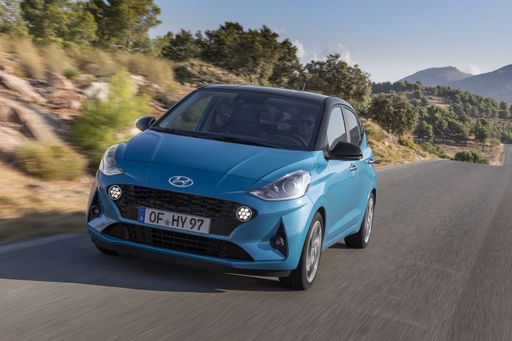 @ Hyundai Motor Company
@ Hyundai Motor Company
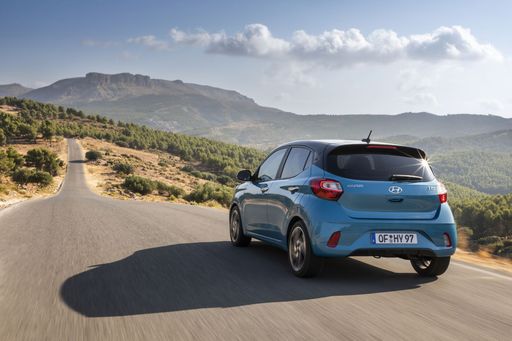 @ Hyundai Motor Company
@ Hyundai Motor Company
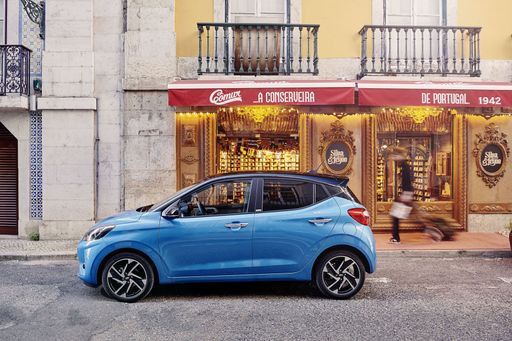 @ Hyundai Motor Company
@ Hyundai Motor Company
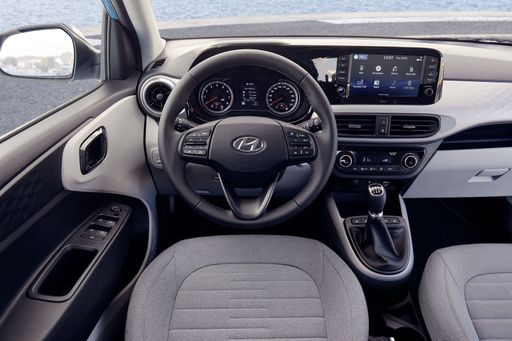 @ Hyundai Motor Company
@ Hyundai Motor Company
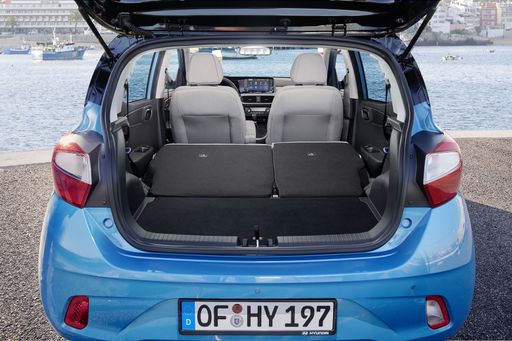 @ Hyundai Motor Company
@ Hyundai Motor Company
Nissan Qashqai
The Nissan Qashqai blends practical, family-friendly packaging with SUV styling that refuses to shout, making it a sensible and dependable choice for everyday life. It’s comfortable to live with, economical on the road, and neatly equipped enough to feel modern without ever feeling precious — perfect if you want crossover versatility without the drama.
details @ Nissan Motor Corporation
@ Nissan Motor Corporation
 @ Nissan Motor Corporation
@ Nissan Motor Corporation
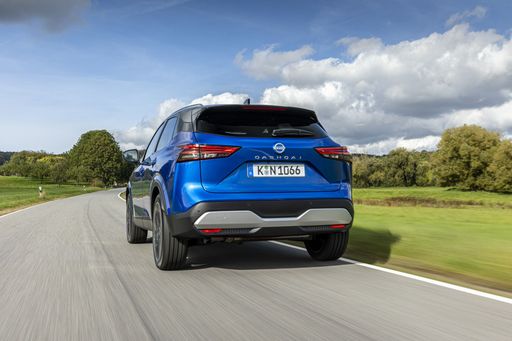 @ Nissan Motor Corporation
@ Nissan Motor Corporation
 @ Nissan Motor Corporation
@ Nissan Motor Corporation
 @ Nissan Motor Corporation
@ Nissan Motor Corporation
 @ Hyundai Motor Company
@ Hyundai Motor Company
|
 @ Nissan Motor Corporation
@ Nissan Motor Corporation
|
|
|
|
Costs and Consumption |
|
|---|---|
|
Price
14600 - 19000 £
|
Price
29600 - 39900 £
|
|
Consumption L/100km
4.9 - 5.5 L
|
Consumption L/100km
4.5 - 6.8 L
|
|
Consumption kWh/100km
-
|
Consumption kWh/100km
-
|
|
Electric Range
-
|
Electric Range
-
|
|
Battery Capacity
-
|
Battery Capacity
-
|
|
co2
110 - 124 g/km
|
co2
102 - 154 g/km
|
|
Fuel tank capacity
36 L
|
Fuel tank capacity
55 L
|
Dimensions and Body |
|
|---|---|
|
Body Type
Hatchback
|
Body Type
SUV
|
|
Seats
4 - 5
|
Seats
5
|
|
Doors
5
|
Doors
5
|
|
Curb weight
996 - 1099 kg
|
Curb weight
1420 - 1665 kg
|
|
Trunk capacity
252 L
|
Trunk capacity
479 - 504 L
|
|
Length
3670 - 3675 mm
|
Length
4425 mm
|
|
Width
1680 mm
|
Width
1835 mm
|
|
Height
1480 - 1483 mm
|
Height
1625 mm
|
|
Max trunk capacity
1050 L
|
Max trunk capacity
1422 - 1447 L
|
|
Payload
344 - 423 kg
|
Payload
466 - 520 kg
|
Engine and Performance |
|
|---|---|
|
Engine Type
Petrol
|
Engine Type
Petrol MHEV, Full Hybrid
|
|
Transmission
Manuel, Automatic
|
Transmission
Manuel, Automatic
|
|
Transmission Detail
Manual Gearbox, Automated Manual
|
Transmission Detail
Manual Gearbox, CVT, Reduction Gearbox
|
|
Drive Type
Front-Wheel Drive
|
Drive Type
Front-Wheel Drive, All-Wheel Drive
|
|
Power HP
63 - 90 HP
|
Power HP
140 - 205 HP
|
|
Acceleration 0-100km/h
11.4 - 18.4 s
|
Acceleration 0-100km/h
7.6 - 10.2 s
|
|
Max Speed
143 - 175 km/h
|
Max Speed
170 - 206 km/h
|
|
Torque
93 - 172 Nm
|
Torque
240 - 330 Nm
|
|
Number of Cylinders
3 - 4
|
Number of Cylinders
3 - 4
|
|
Power kW
46 - 66 kW
|
Power kW
103 - 151 kW
|
|
Engine capacity
998 - 1197 cm3
|
Engine capacity
1332 - 1498 cm3
|
General |
|
|---|---|
|
Model Year
2024
|
Model Year
2025
|
|
CO2 Efficiency Class
C, D
|
CO2 Efficiency Class
E, C
|
|
Brand
Hyundai
|
Brand
Nissan
|
Is the Hyundai i10 offered with different drivetrains?
The Hyundai i10 is offered with Front-Wheel Drive.
The prices and data displayed are estimates based on German list prices and may vary by country. This information is not legally binding.
